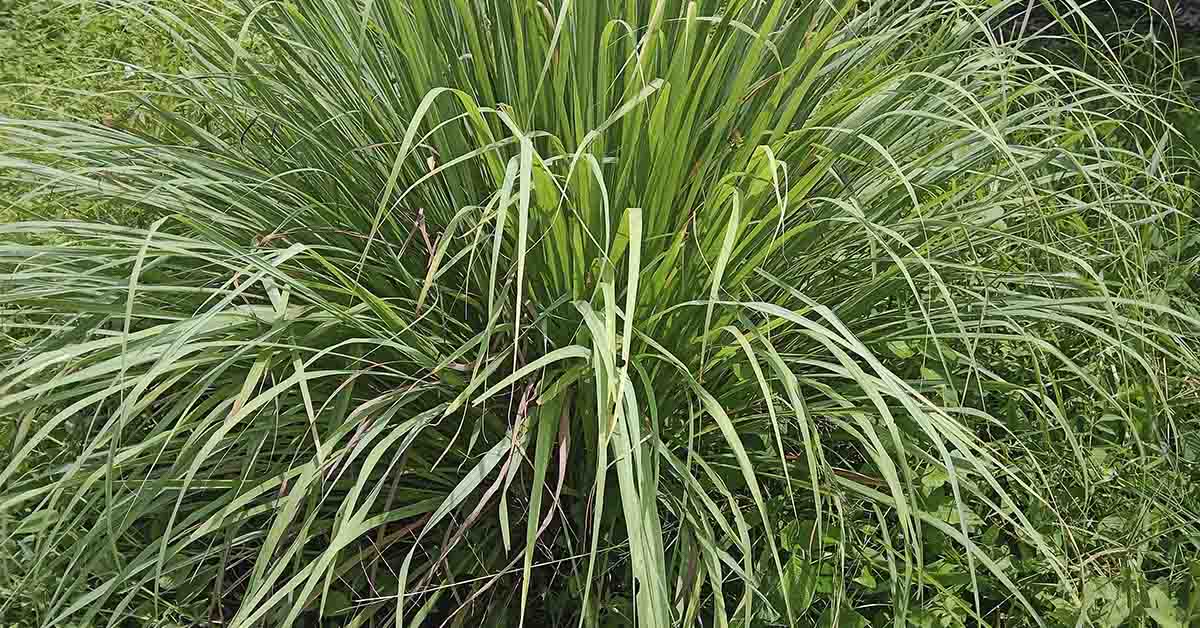Tired of swatting at mosquitoes every time you step outside? Nature might already have the answer. Instead of reaching for chemical sprays or candles, consider planting a few strategic herbs and flowers that mosquitoes can’t stand. Many of these plants not only look beautiful but also release strong scents that disrupt the mosquito’s ability to track people. Even better, they’re easy to grow in containers, garden beds, or sunny window boxes. Whether you’re working with a backyard, patio, or balcony, these plants can create a natural barrier and add fresh fragrance to your space. From lavender to lemongrass, each one offers a simple way to reclaim your outdoor comfort. Let’s explore over 20 mosquito-repelling plants that can help you enjoy your outdoor space.
Lavender
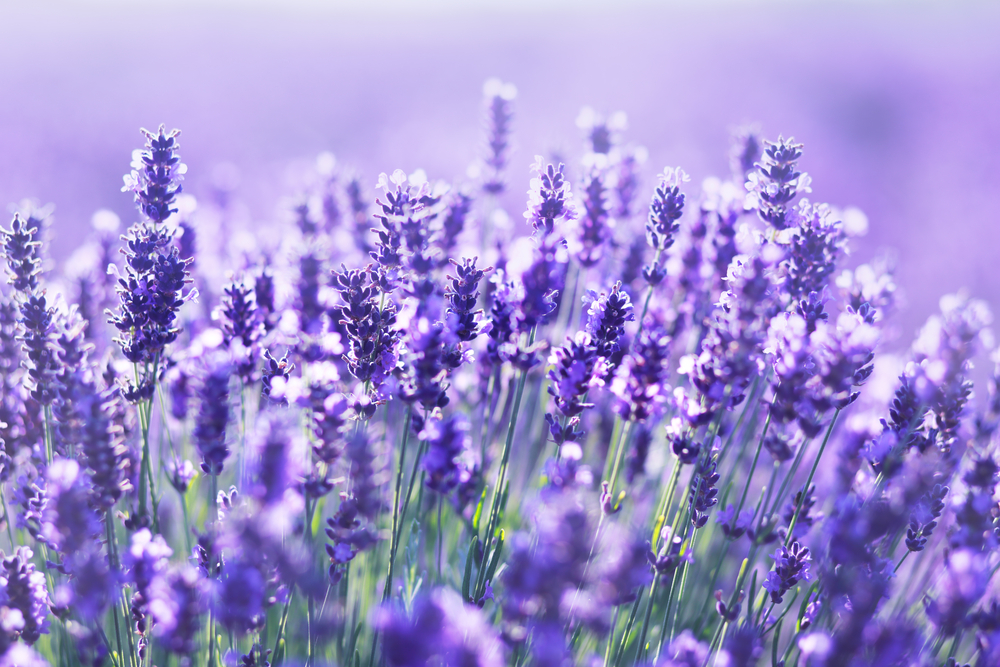
Lavender does more than offer calming scent and vibrant purple flowers, it’s also a powerful mosquito repellent. Its essential oils contain compounds that confuse and repel mosquitoes, making it a great option for gardens and outdoor seating areas. Lavender grows best in full sunlight with well-drained soil, and it thrives in both the ground and containers. You don’t need to crush the leaves for it to work; its scent naturally fills the air. Plant it near entrances or along garden paths to form a fragrant defense line. Plus, lavender attracts pollinators like bees and butterflies, which adds to its garden appeal. The bonus? It’s low-maintenance, drought-tolerant, and perfect for those who want pest protection without much upkeep.
Citronella Grass
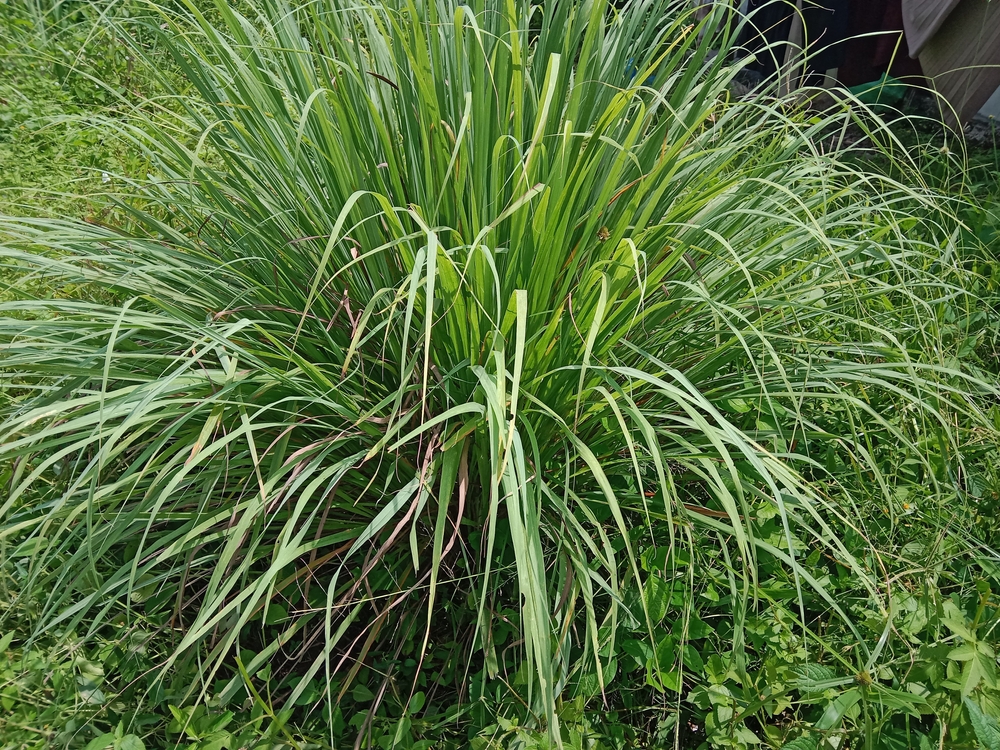
Citronella is perhaps the most well-known natural mosquito-repelling plant, and for good reason. This tall, grass-like plant contains citronella oil, a common ingredient in candles and sprays. However, the plant itself works even better when placed around patios, porches, and walkways. Citronella needs a warm climate and lots of sun to thrive, so it’s ideal for summer gardens. It also grows well in large pots, which makes it easy to move indoors when temperatures drop. The key is to brush or gently crush the leaves to activate its scent. With regular watering and trimming, citronella grows fast and tall, creating a lush green border that bugs can’t stand.
Lemongrass
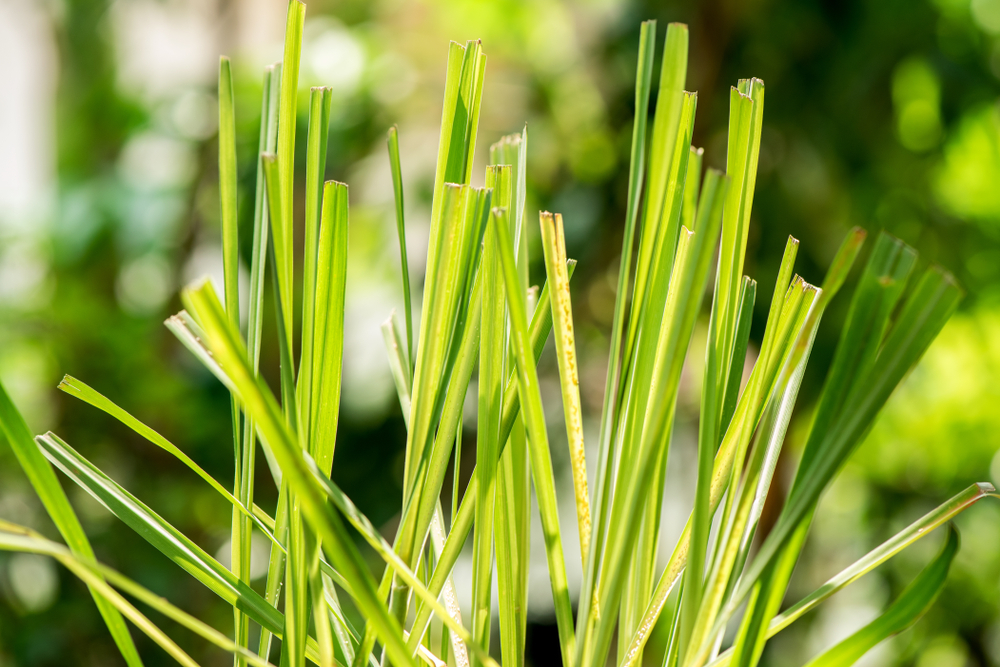
Often confused with citronella, lemongrass is actually one of the primary sources of citronella oil. Its citrusy scent repels mosquitoes naturally, and its tall, graceful blades give your garden a tropical look. Lemongrass prefers full sun and warm temperatures, so it thrives in summer conditions. It grows well in large pots or directly in the ground, as long as the soil drains well. Regular watering helps it stay lush and aromatic. For added effect, break a few blades to release more scent when you’re sitting nearby. With both form and function, lemongrass adds a beautiful, practical touch to any mosquito-fighting garden.
Read More: Mosquito Bites Sting and Swell? You Could Have Skeeter Syndrome
Catnip
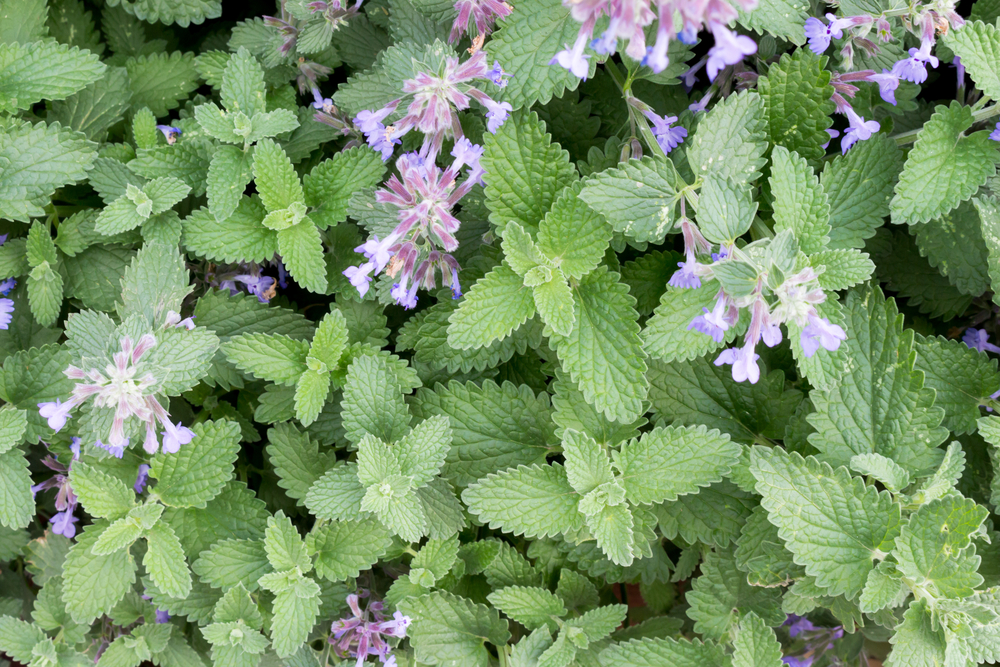
Catnip may be famous for making cats go wild, but it is also an amazing mosquito-repelling plant. This member of the mint family contains nepetalactone, a compound proven to be even more effective than DEET in some studies. Catnip grows quickly and spreads easily, so it’s best to keep it in pots unless you want it to take over your garden. It thrives in full sun and well-drained soil and doesn’t require much attention once established. Crushing the leaves releases a stronger scent, increasing its pest-fighting effect. If you have cats, be warned, they may roll in your plants. Still, for a low-maintenance, dual-purpose herb, catnip is hard to beat.
Nasturtium
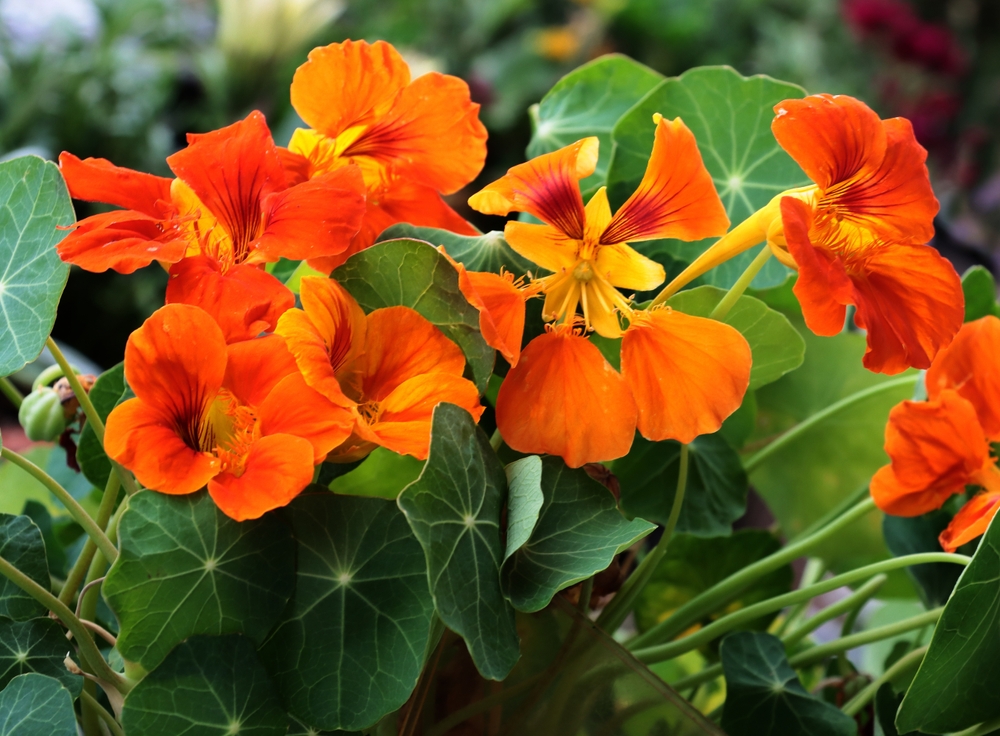
Nasturtiums bring a burst of color to your garden while working quietly as a natural pest repellent. These trailing or bushy plants produce bright blooms in shades of orange, red, and yellow, and their peppery scent drives away mosquitoes, aphids, and whiteflies. While not as aromatic as herbs like basil or mint, nasturtiums act as a trap crop, attracting pests away from more vulnerable plants. This makes them an excellent companion for vegetables like tomatoes, beans, and cucumbers. Nasturtiums grow well in poor soil and need only moderate watering and full to partial sun. They’re also easy to grow from seed, making them a great pick for beginner gardeners. Bonus: the leaves and flowers are edible and add a peppery kick to salads and dishes.
Marigolds
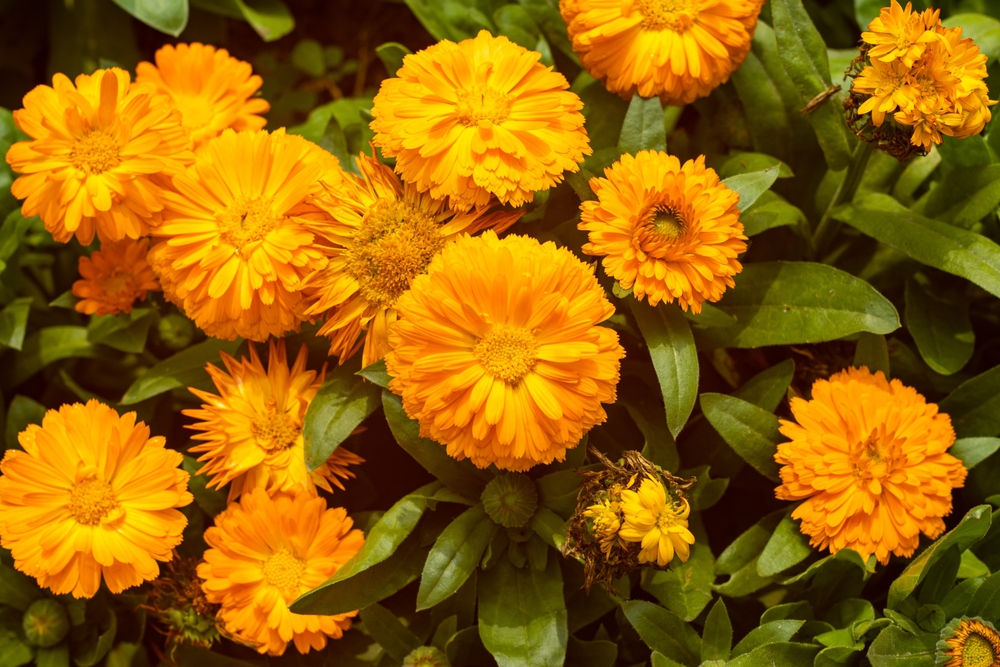
Marigolds brighten up any garden with their golden blooms, but they also contain pyrethrum, a natural compound used in many insect repellents. Their strong scent deters mosquitoes, whiteflies, and aphids. Marigolds grow easily from seed, require full sun, and bloom throughout the warmer months. Plant them along garden borders, around patios, or near vegetable beds to keep pests at bay. These flowers also help protect tomatoes and peppers by warding off harmful bugs. Best of all, marigolds are hardy, drought-resistant, and perfect for beginners. Their vibrant color and ability to keep mosquitoes away make them a must-have for any pest-conscious gardener.
Garlic
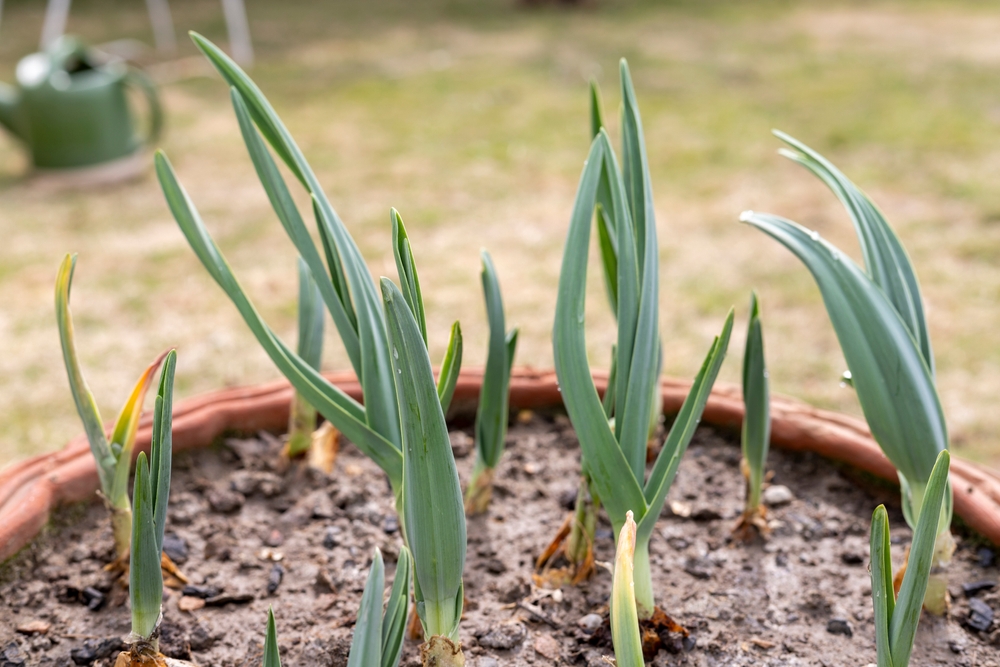
Garlic’s strong smell may not be for everyone, but mosquitoes can’t stand it. This pungent mosquito-repelling plant produces sulfur compounds that work as a natural insect repellent. You can plant garlic bulbs directly into garden beds or large containers. It prefers full sun and needs well-drained soil to avoid rot. As garlic grows, it subtly infuses the area with its scent, deterring mosquitoes, aphids, and even some beetles. You can also crush a few cloves and place them near high-traffic outdoor areas for added effect. And when harvest time comes, you’ll enjoy fresh garlic for your meals and fewer bites on your skin.
Basil

You might use basil in your pasta sauce, but this aromatic herb also works as a mosquito repellent. Basil gives off its scent naturally, so you don’t need to bruise the leaves to get results. Mosquitoes dislike the strong, spicy aroma, which comes from its essential oils. Basil grows well in sunny spots and can be kept in pots, garden beds, or windowsills. Water it regularly, and it’ll reward you with a steady supply of leaves for cooking and pest control. Sweet basil is the most popular variety, but lemon basil and cinnamon basil also work. The plant’s versatility makes it perfect for cooks and gardeners alike.
Read More: Why Mosquitos But Some People More Than Others
Sage
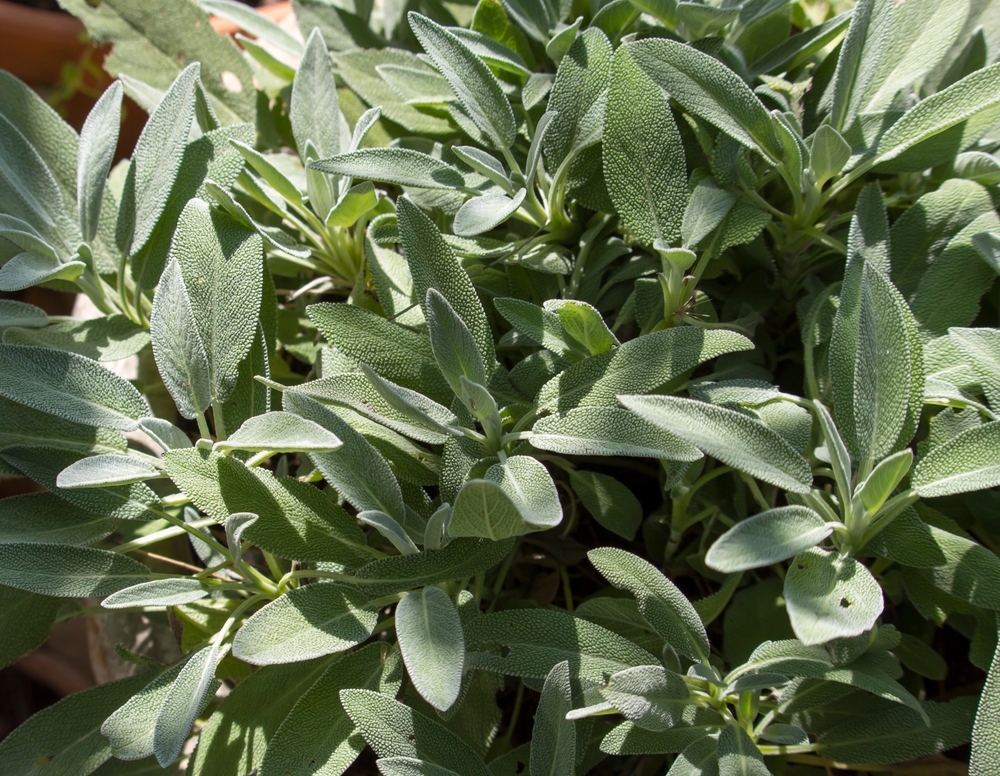
Sage brings more than an earthy flavor to your kitchen; it also keeps mosquitoes at bay. The plant’s strong, herbal scent comes from its natural oils, which bugs find overwhelming. You can grow sage in garden beds or containers as long as it gets full sunlight and well-drained soil. It’s drought-tolerant and thrives with minimal effort. To maximize its repellent power, toss a few dried sage leaves into a firepit or barbecue. The smoke will create an effective bug-repelling barrier during outdoor events. Whether fresh or dried, sage remains a smart addition to any mosquito-fighting setup as its a great mosquito-repelling plant.
Mint
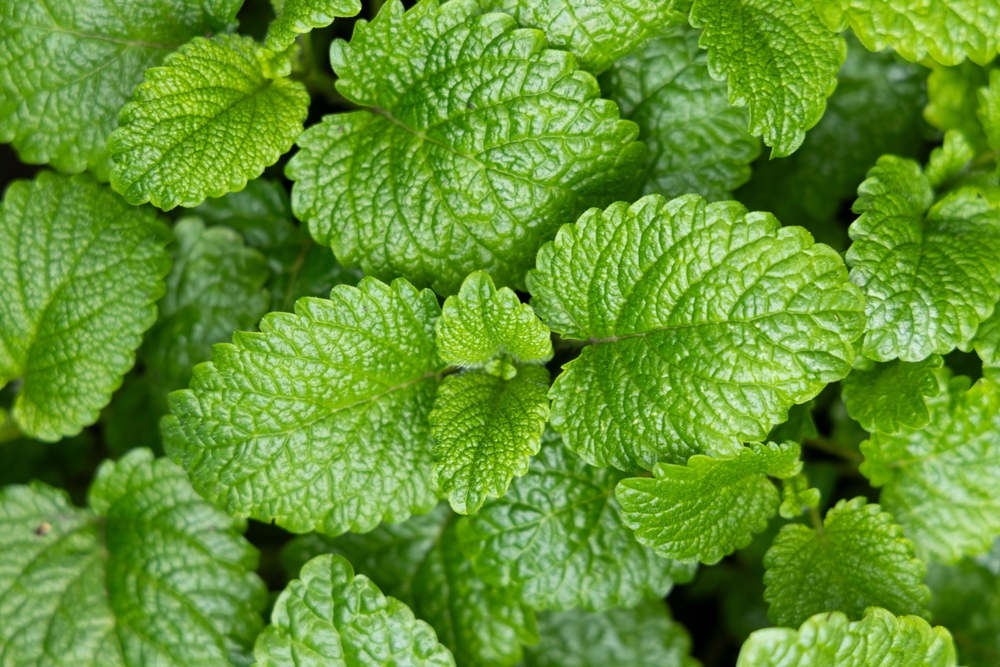
Mint’s crisp, refreshing scent smells great to us, but it drives mosquitoes away. Both spearmint and peppermint varieties contain menthol, which masks the human scent mosquitoes use to locate you. Mint grows quickly and spreads aggressively, so it’s best to plant it in containers to control its spread. Place pots near seating areas, windows, or doors to take advantage of its natural repellency. It thrives in partial sun with moist soil, making it easy to maintain with regular watering. As a bonus, you can harvest leaves for tea, cooking, or even homemade bug spray. With minimal effort, mint gives you a natural and fragrant way to keep pests at bay.
Bay Laurel
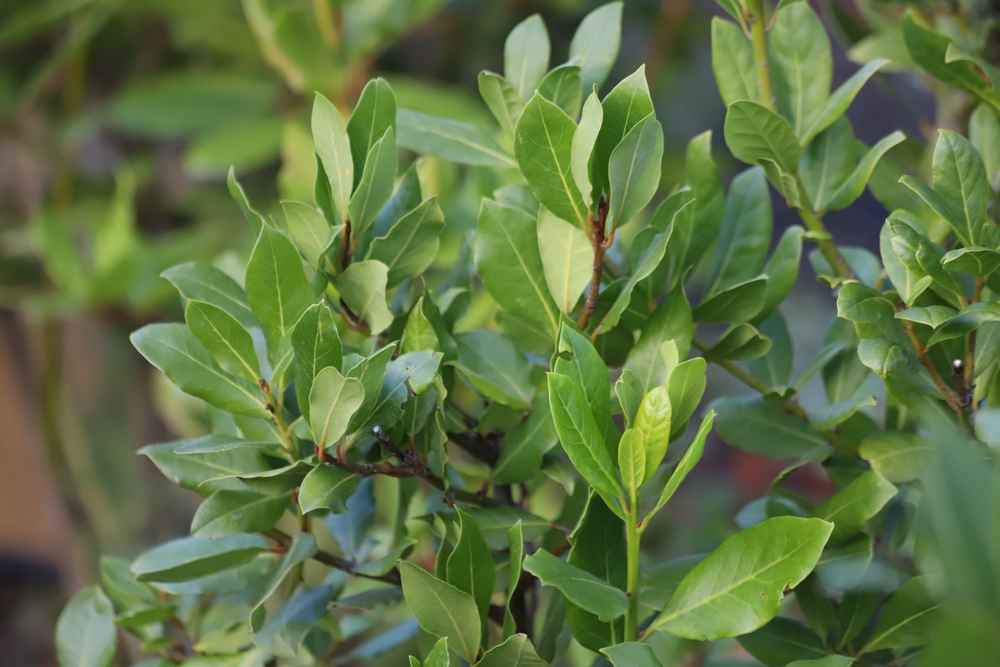
Bay laurel, the plant behind the bay leaves in your pantry, also acts as a natural mosquito-repelling plant. Its aromatic leaves release essential oils that interfere with a mosquito’s ability to smell its prey. Bay laurel grows slowly, but it can become a beautiful shrub or small tree when properly cared for. It prefers sunny spots and well-drained soil. Grow it in a large pot so you can move it indoors during cold weather. While you’re keeping mosquitoes away, you can also harvest the leaves for cooking. With a dual-purpose plant like bay laurel, your yard gains both function and flavor.
Allium

Alliums, which include onions, leeks, and ornamental flowering varieties, release a sulfur-based scent that mosquitoes and many garden pests hate. These globe-shaped flowers add a dramatic touch to your garden while acting as a pest deterrent. Plant them in full sun with well-drained soil, and they’ll return year after year. Their scent is strongest near the base, where most of the oils concentrate. Alliums not only repel mosquitoes but also deter aphids, carrot flies, and other garden nuisances. With minimal maintenance and big visual impact, these plants are ideal for gardeners who want both style and substance.
Bee Balm
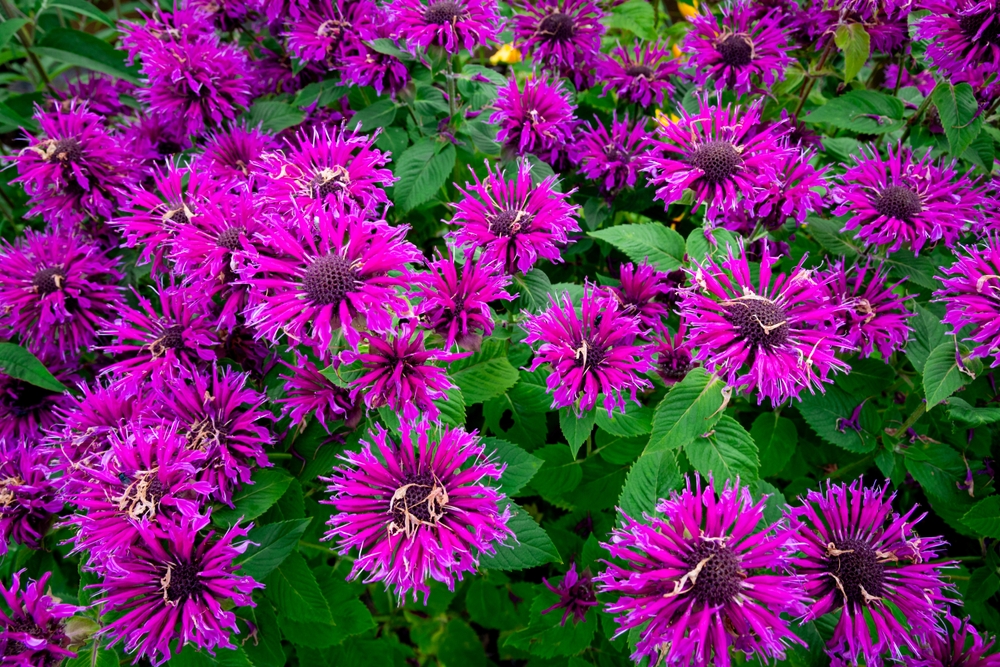
Bee balm, also known as Monarda or wild bergamot, attracts pollinators like bees and hummingbirds while keeping mosquitoes away. Its citrusy scent comes from the same compounds found in traditional bug repellents. Bee balm blooms in shades of red, pink, and purple, making it a vibrant addition to any garden. It thrives in full sun and moist, well-drained soil. Since it spreads easily, give it room or keep it contained in pots. Crushing the leaves releases more oils, enhancing its repellent properties. With its bold blooms and mosquito-fighting power, bee balm strikes the perfect balance between beauty and utility.
Rosemary
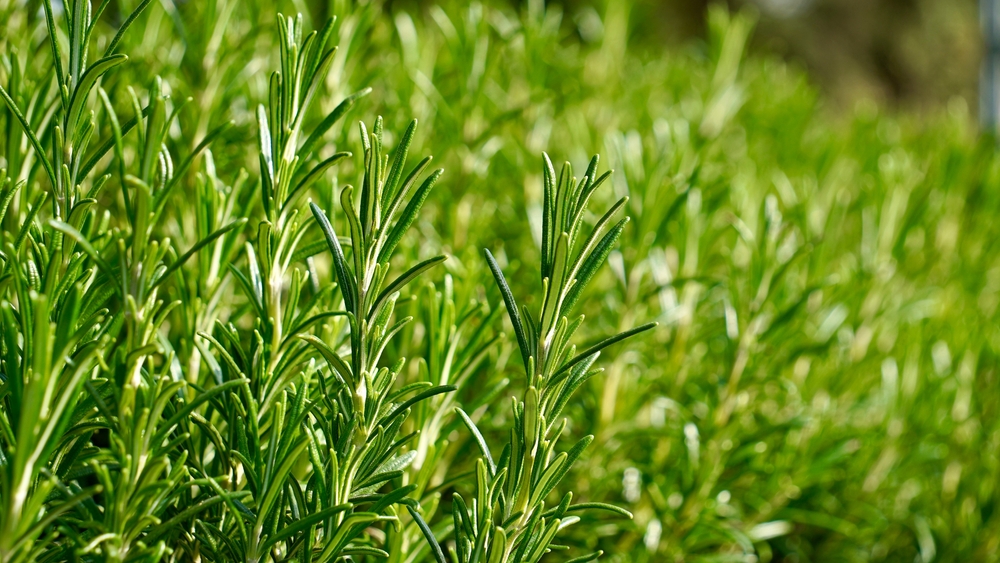
Rosemary offers more than a savory scent for your roasted potatoes, it also works as a natural mosquito-repelling plant. Its woody aroma is pleasant to humans but overwhelming to mosquitoes. Rosemary thrives in sunny locations with well-draining soil and does well in both garden beds and containers. When you brush up against the leaves or clip a few sprigs, the scent intensifies, boosting its repelling power. This plant is drought-tolerant and hardy, making it a great choice for gardeners who want low-maintenance greenery. You can even dry the leaves and burn small bundles like incense to keep mosquitoes away from outdoor gatherings. With its upright growth and fragrant foliage, rosemary adds both structure and protection to your outdoor space.
Read More: 11 Ways to Treat and Stop Mosquito Bites from Itching
Floss Flower
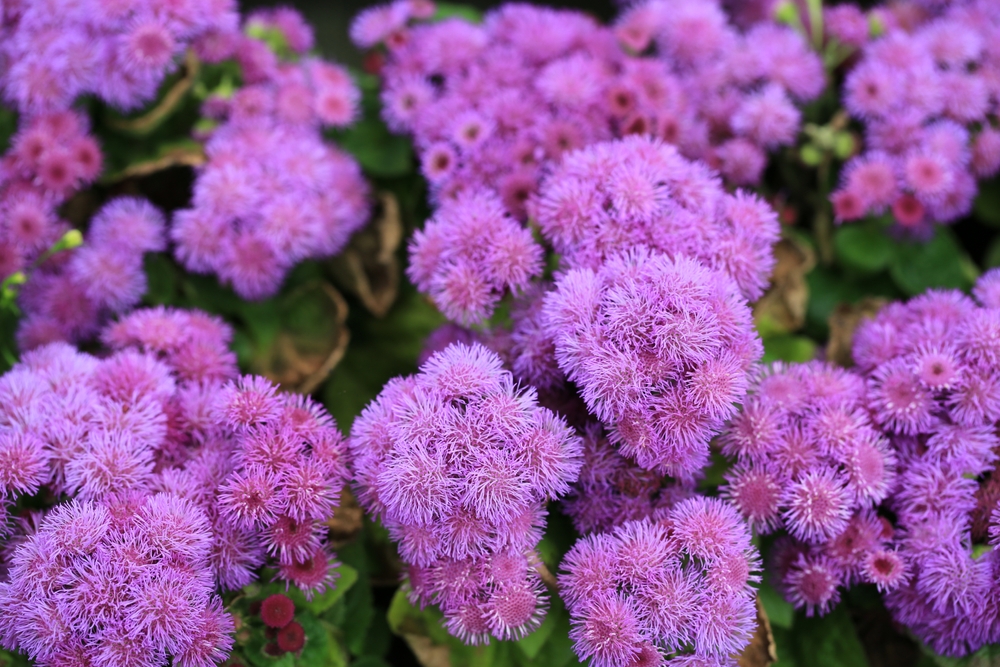
Floss flower, also known as ageratum, produces clusters of fuzzy, blue-purple flowers that release coumarin, a compound mosquitoes dislike. This annual thrives in full sun and adds a soft splash of color to any landscape. It’s compact and works well in borders, containers, or flower beds. While not as potent as citronella or lavender, floss flower still contributes to a mosquito-repelling garden strategy. Its delicate look hides its tough bug-fighting abilities. Water it regularly and deadhead spent blooms to keep it flourishing all season. Floss flower is an attractive way to protect your space without relying on harsh chemicals.
Eucalyptus
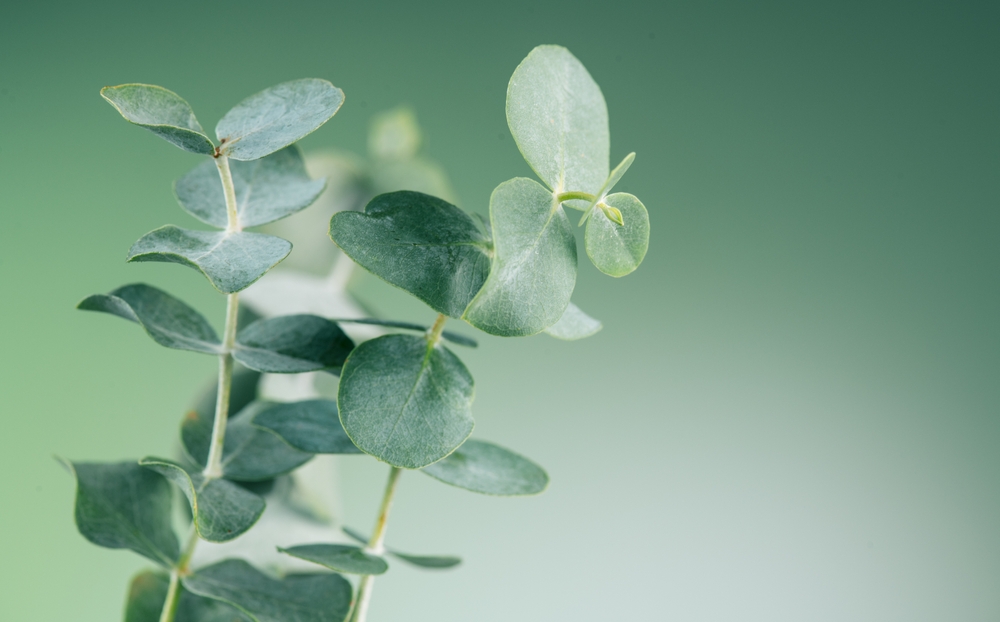
Eucalyptus trees and shrubs are known for their fresh, menthol-like scent, and mosquitoes hate it. The leaves contain cineole, a natural repellent that disrupts mosquito activity. While large eucalyptus trees need space, dwarf or potted varieties are easier to manage in smaller gardens. They grow best in sunny areas with well-drained soil and benefit from occasional pruning. Crush a few leaves and scatter them around your patio to release more oils. Eucalyptus also makes a great companion plant near entryways or seating zones. With its refreshing scent and insect-repelling power, eucalyptus delivers both atmosphere and protection.
Fennel
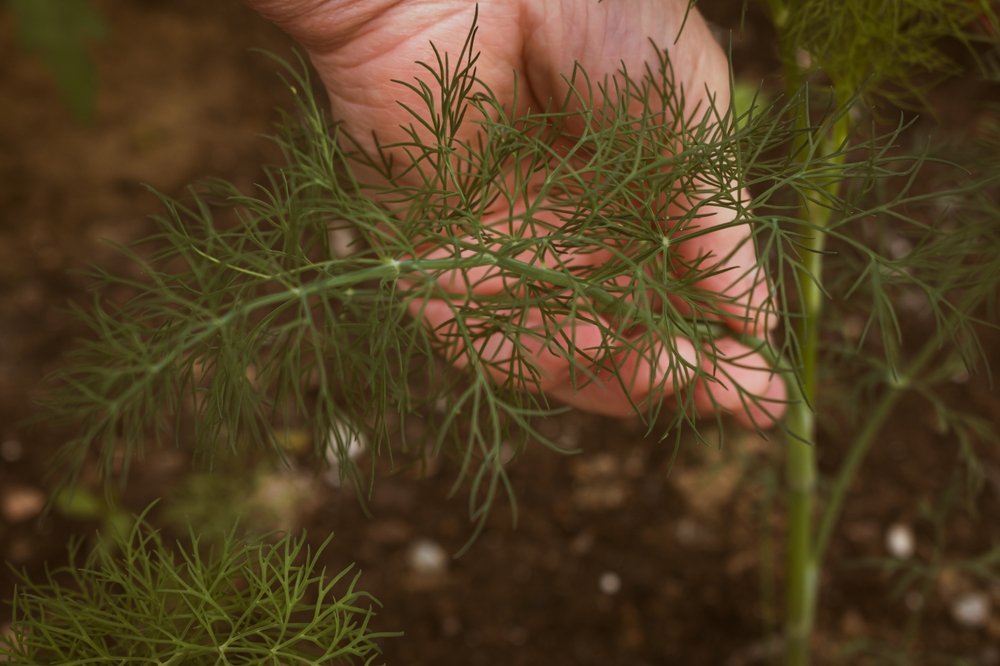
Fennel isn’t just a licorice-flavored herb for cooking; it’s also a mosquito deterrent. The plant’s strong scent, especially from its feathery leaves and seeds, confuses mosquitoes and discourages them from lingering. Fennel thrives in full sun and can grow quite tall, so it’s ideal for garden beds or large containers. It prefers well-drained soil and needs regular watering in hot weather. Besides repelling bugs, fennel attracts beneficial insects like ladybugs, which can help with overall garden health. You can use both the bulbs and fronds in the kitchen, making fennel a practical and multi-use addition to your mosquito-repellent lineup.
Petunias
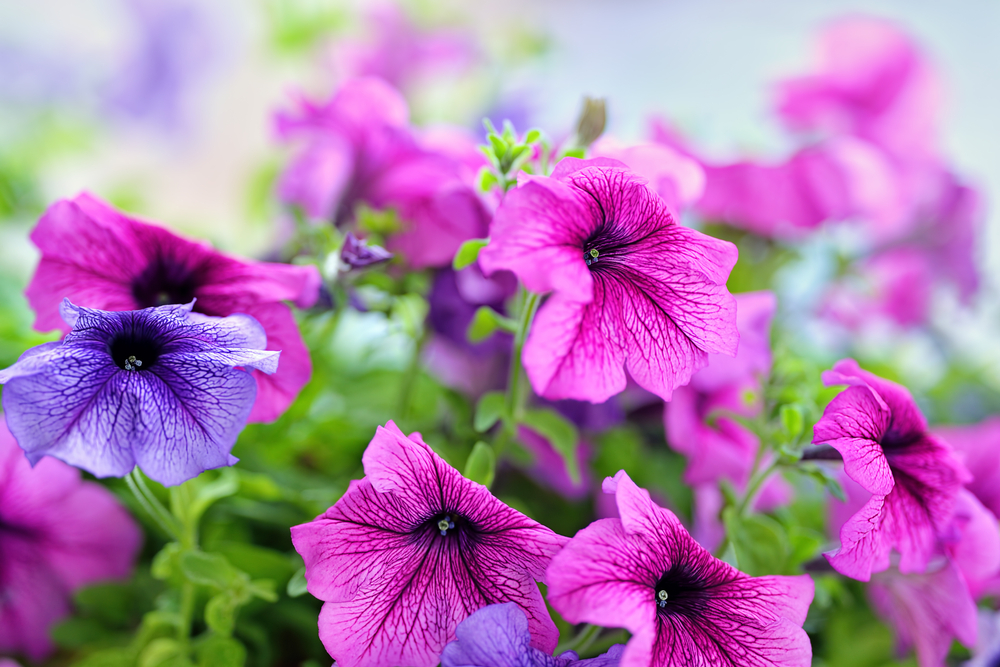
Petunias are more than just colorful annuals, they’re also known as a natural mosquito-repelling plants. These cheerful flowers produce a mild, sweet scent that wards off mosquitoes, aphids, tomato hornworms, and even squash bugs. Their pest-repelling ability comes from compounds in their sticky stems and leaves, which make it hard for insects to land and linger. Available in a rainbow of colors, petunias can be planted in garden beds, window boxes, or hanging baskets to add both beauty and function. While they aren’t as strong as citronella or mint, their ability to deter multiple pests makes them a valuable companion plant. Plus, they’re easy to grow and perfect for adding charm to patios, balconies, or borders.
Geranium
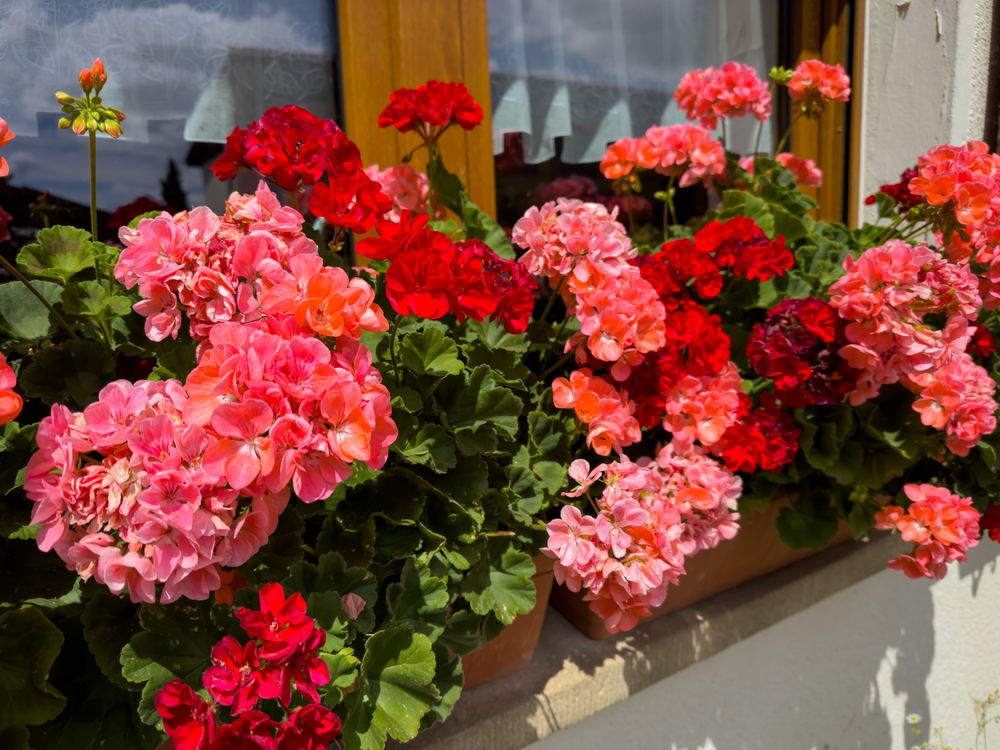
Geraniums, especially scented varieties like citronella geranium, are highly effective at repelling mosquitoes. Their bright flowers and deeply fragrant leaves make them a favorite for patio pots and hanging baskets. The citrus-like scent masks the human odors mosquitoes seek, creating a natural barrier. Geraniums thrive in sunny spots and well-drained soil, making them easy to care for. Regular deadheading keeps blooms coming all season. Crush a leaf or two when sitting outside to release more of its mosquito-repelling oils. With their colorful appearance and functional benefits, geraniums are a charming and effective choice for any outdoor area.
Chrysanthemums
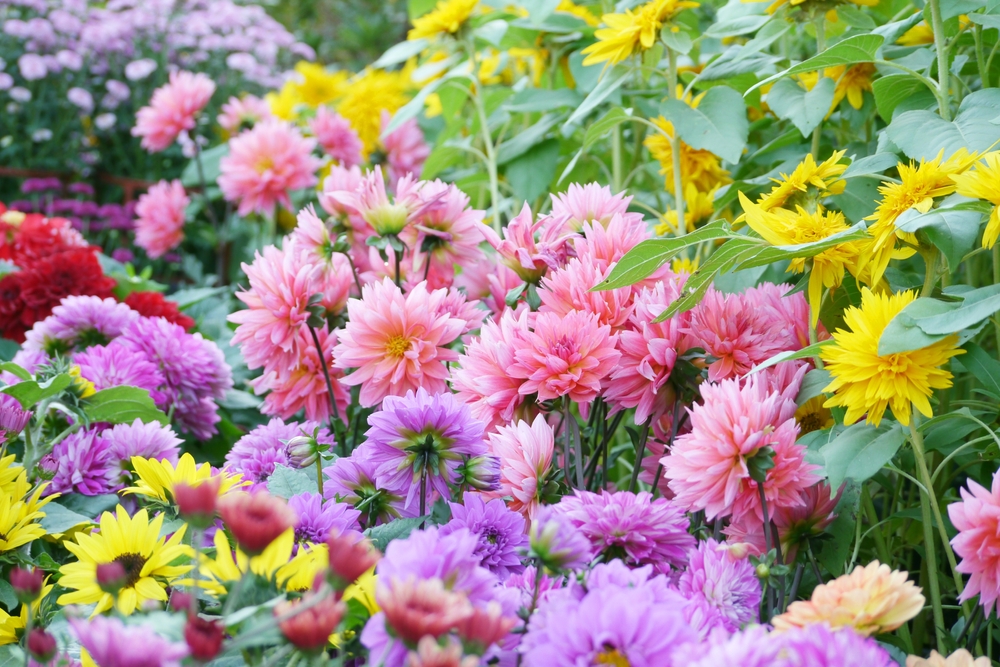
Chrysanthemums do more than signal the arrival of fall, they also contain pyrethrum, the same compound used in many commercial insect repellents. This natural insecticide repels mosquitoes, ticks, fleas, and even roaches. Chrysanthemums need full sun and rich, well-drained soil. They bloom in a variety of colors and shapes, brightening up your space while working hard to keep pests away. For best results, plant this mosquito-repelling plant around the perimeter of your garden or near doorways. While they’re more seasonal, their pest-fighting power makes them a valuable addition, especially in late summer and early fall.
Read More: Dragonflies Can Devour Hundreds of Mosquitoes Daily — Here’s How to Attract Them to Your Yard
Pitcher Plant
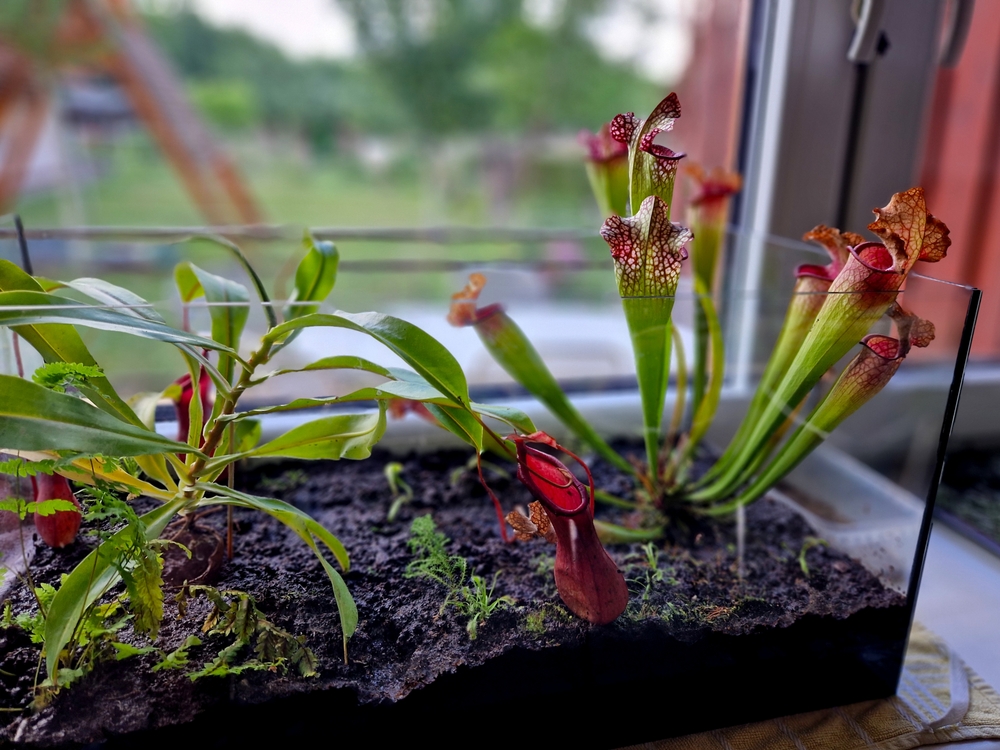
Unlike most plants on this list, pitcher plants don’t repel mosquitoes, they eat them. These carnivorous plants trap and digest insects, including mosquitoes, using a liquid-filled cavity. Pitcher plants are perfect for humid, sunny environments and thrive in poor, acidic soil. They do best in containers with constant moisture and can even be grown indoors with the right lighting. If you’re looking for a dramatic and natural way to control mosquito populations, pitcher plants provide an unusual but effective solution. Their exotic appearance also makes them a great conversation piece.
Mexican Mint (Cuban Oregano)
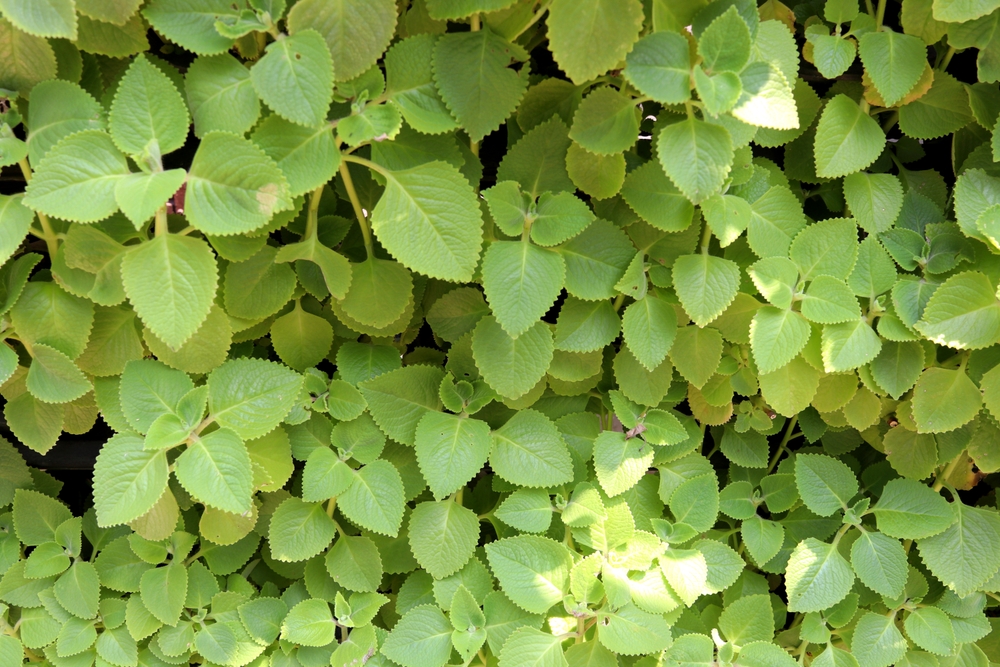
Mexican mint, also called Cuban oregano, combines the benefits of oregano and mint into one powerful mosquito-repelling plant. Its thick, aromatic leaves release a strong scent that mosquitoes avoid. This plant thrives in warm climates, sunny spots, and containers. It’s drought-tolerant, easy to grow, and spreads quickly when happy. Crush a few leaves to heighten the aroma during outdoor meals or gatherings. Mexican mint also has culinary uses and can be substituted for traditional oregano in many dishes. If you want a fragrant and functional plant that works double duty, this one delivers.
Pennyroyal
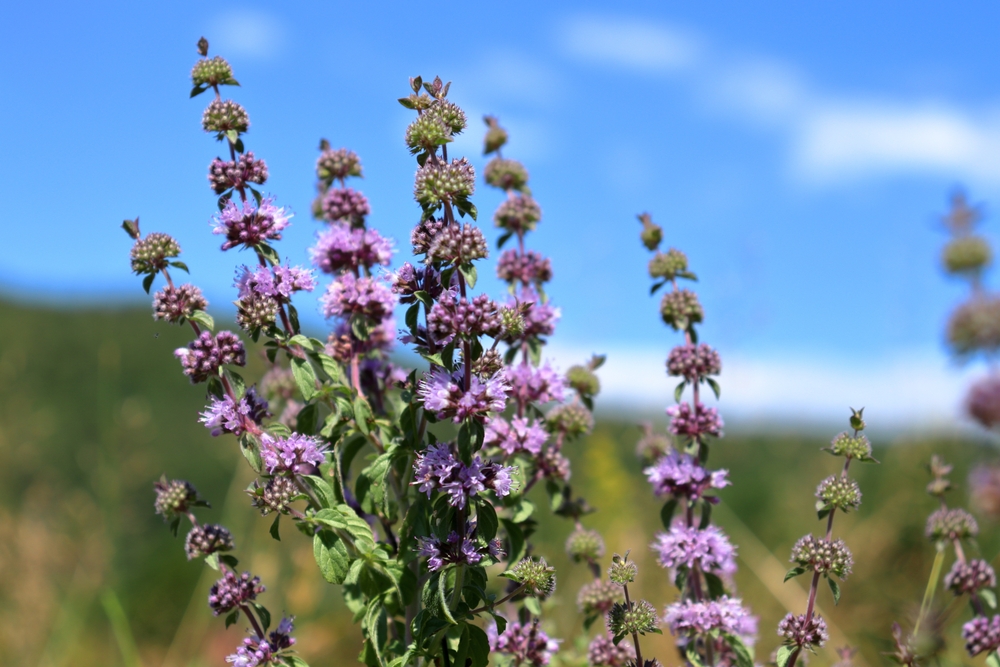
Pennyroyal is a lesser-known herb that packs a punch when it comes to repelling mosquitoes. Its strong, minty scent is unpleasant to insects, making it a natural outdoor barrier. However, pennyroyal should be used with caution, it’s toxic if ingested by pets or humans. For that reason, it’s best kept in containers and out of reach of children and animals. It thrives in full to partial sun and grows well in compact spaces. You can place pots near patios or entrances for added protection. Despite its toxicity, when handled responsibly, pennyroyal remains a powerful and effective tool for natural pest control.
Lantana

Lantana is a tough, sun-loving mosquito-repelling plant that adds bursts of color to your garden while helping to keep mosquitoes away. Its clusters of small, brightly colored flowers come in shades of red, orange, yellow, pink, and purple. The oils in its leaves and flowers act as a natural deterrent, especially when the plant is brushed or disturbed. Lantana thrives in hot, dry conditions and grows well in containers, garden beds, or as ground cover. It’s drought-tolerant and requires little maintenance once established. While lantana is toxic if ingested by pets or children, it remains a favorite in mosquito-prone areas due to its resilience and effectiveness.
Tansy
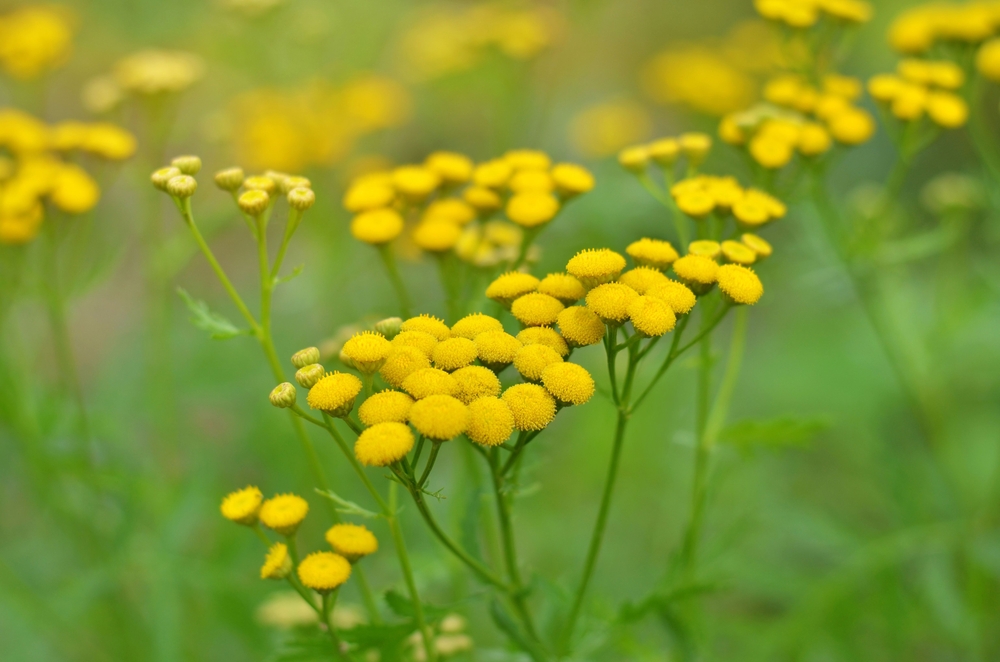
Tansy may not be the most popular garden flower, but it’s an old-fashioned mosquito repellent with a long history. Its fern-like leaves and bright yellow button-like flowers make it visually appealing, while its camphor-like scent drives away mosquitoes and flies. Tansy thrives in full sun and well-drained soil, and it’s quite hardy once established. It’s best to plant tansy away from areas where kids or pets play, as the plant can be toxic if ingested. Still, in the right spot, it serves as a low-maintenance, effective deterrent. To boost its scent, crush a few leaves occasionally or place them near outdoor gathering spots.
Wormwood
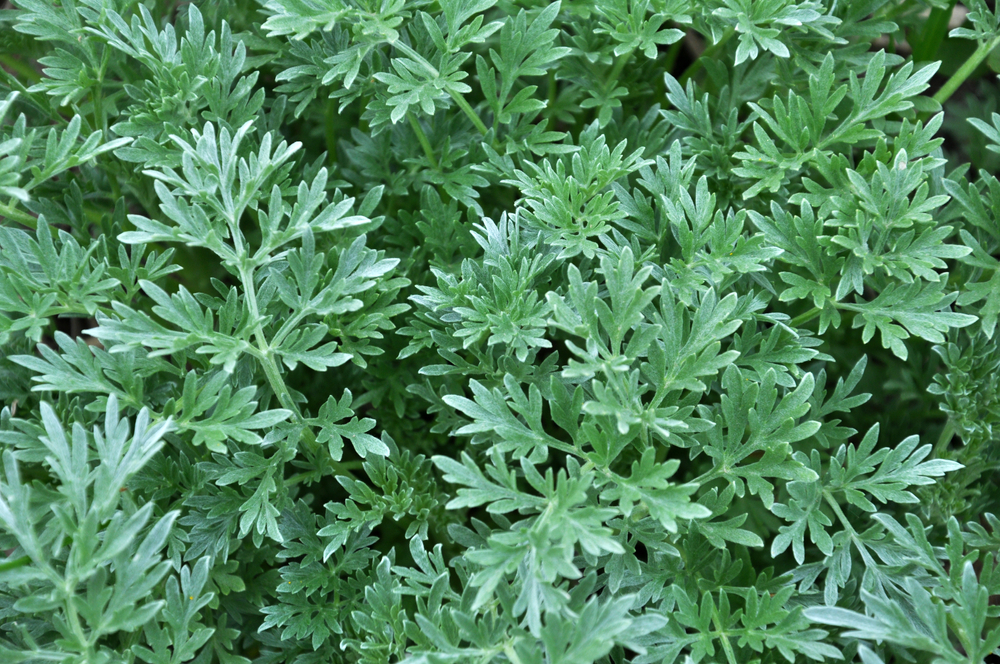
Wormwood is a silver-leaved perennial with a strong, bitter aroma that insects avoid. This hardy plant produces compounds that repel mosquitoes, flies, and even moths. It prefers dry soil and full sun, making it a great choice for low-water gardens. Wormwood works best when planted along borders or used as an ornamental filler between other herbs. While it doesn’t attract pollinators like some other plants, its foliage adds texture and contrast to any garden bed. Keep in mind that wormwood is toxic if consumed, so avoid planting it in areas accessed by pets or children. For a rugged, elegant way to repel pests, wormwood holds its own.
Create Your Own Mosquito-Free Oasis
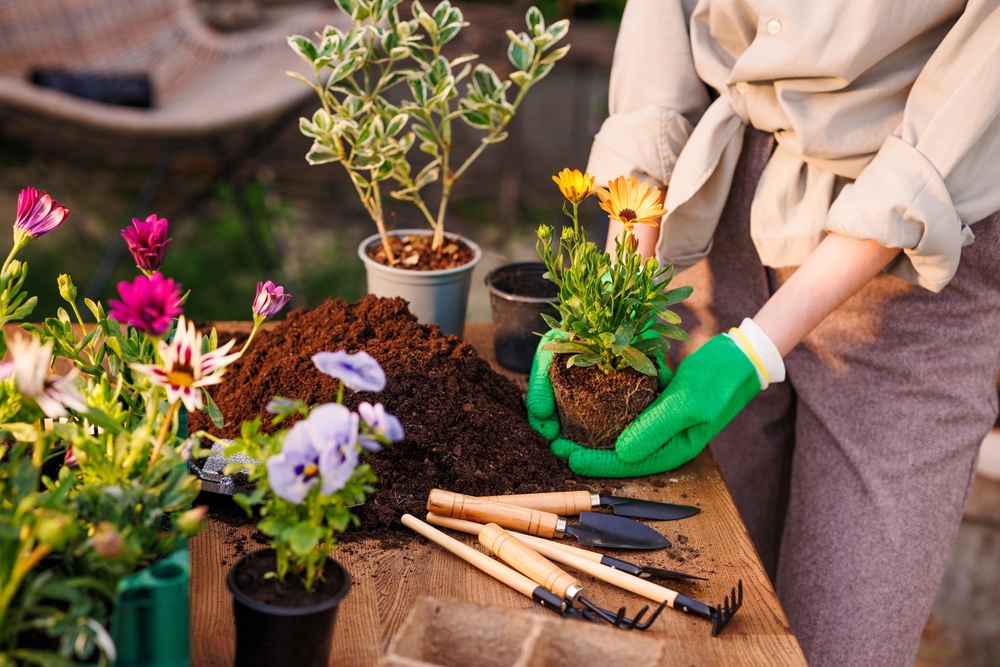
With so many natural mosquito-repelling plant options available, you don’t need to rely on sprays or chemical traps to keep mosquitoes at bay. These plants not only repel pests but also add color, fragrance, and beauty to your yard or balcony. By strategically placing herbs like basil and mint near your seating areas, or surrounding your garden with blooms like marigolds and chrysanthemums, you can enjoy the outdoors without constant swatting. Many of these plants are beginner-friendly and thrive in containers, making them accessible no matter your space or skill level.
Read More: The One Vitamin That Could Help Keep Mosquitoes Away All Summer
